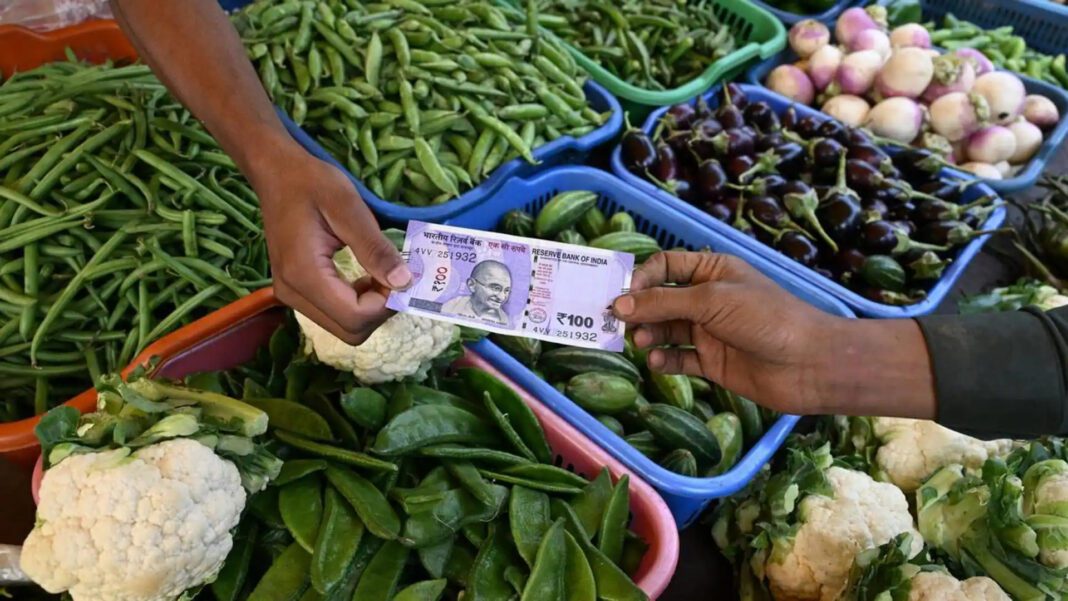India’s consumer price index (CPI)-based retail inflation decelerated to 1.54% in September 2025, marking the lowest rate in over eight years. This is a steep drop from 2.07% in August and below market expectations of ~1.7%.
The sharp easing is attributed mainly to declines in food prices (especially vegetables, pulses, cereals) and favorable base effects, along with the recent GST rate rationalisation.
Key Drivers of the Decline
- Food & beverages deflation: Food inflation turned negative at –2.28%, continuing the trend for the fourth consecutive month.
- Vegetables & pulses steep fall: Vegetable prices declined ~21.38% year-on-year, while other staples also saw large drops.
- Sub-categories easing: Edible oils, fruits, cereals, fuel & light also saw easing inflationary pressure.
- Base effect: Strong inflation levels in the same period last year amplified the slowdown in year-on-year comparison.
In rural areas, inflation moderated to 1.07%, and in urban areas, it came down to 2.04%.
Core Inflation & Other Trends
While headline inflation softened considerably, core inflation (excluding food and fuel) rose to 4.5%, boosted by housing costs, gold prices, and other non-food costs.
Also notable is that this time, inflation dipped below the Reserve Bank of India’s lower tolerance bound (2%) — only the second time in recent months.
Implications for Monetary Policy & the Economy
- Room for further rate cuts
With inflation well under control, the RBI could consider a 25 basis point cut in its December policy review. Analysts believe prior rate cuts (100 bps so far this year) may now filter through more fully. - Revision of projections
The RBI has already downward revised its FY26 inflation forecast to ~2.6%.
At the same time, it also raised its GDP growth forecast to 6.8%, reflecting optimism amid easing price pressures - Relief to consumers and sentiment boost
Lower inflation enhances consumers’ purchasing power, especially in essential items. It also supports consumption demand. - Watch for volatility and upside risks
However, upside surprises in food (due to erratic rainfall or supply disruptions), rising crude or global commodity prices, or incomplete transmission of GST cuts could introduce inflationary pressures.
Outlook & What to Watch
- October 2025 inflation print will be closely watched — whether the trend continues or reverses.
- The full pass-through of GST rate cuts (implemented in late September) will influence October onward data.
- Core inflation trajectory: whether it cools as well or remains sticky.
- RBI’s policy decisions, especially in December — whether a cut will be taken or deferred in light of growth vs inflation balance.



